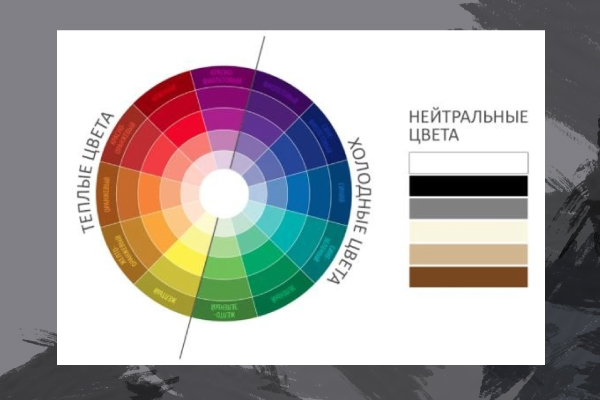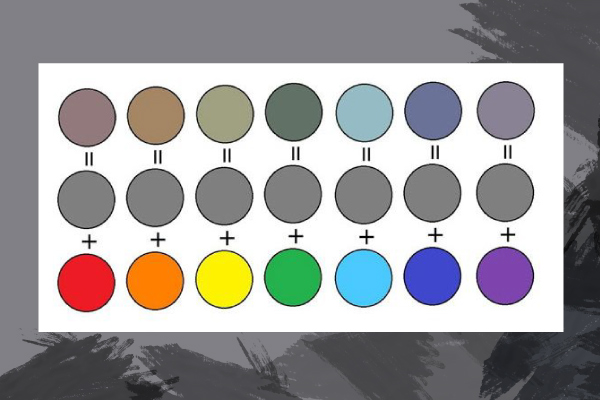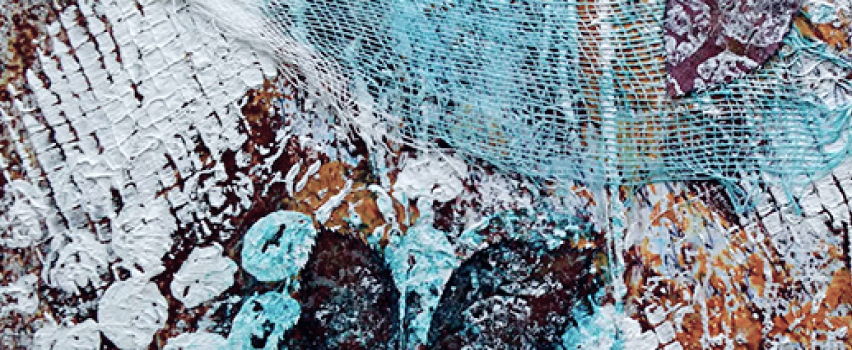
There is a whole system of correct color mixing in painting. Thanks to it, you can significantly expand the palette and create a variety of shades of the same color. Having become familiar with the basic principles of color mixing, you can always create the desired shade yourself. We will tell you how to do this and what rules to follow using gray as an example.
Despite the fact that gray may initially seem boring and monotonous, it is very much in demand in painting. The process of creating a picture can rarely do without it. And the variety of its shades, which we will discuss below, may even pleasantly surprise you. But first, we need to get acquainted with the laws of color mixing.
Color mixing laws

To begin with, all colors can be divided into two main categories from a colouristic point of view:
- Chromatic - bright, colored.
- Achromatic - white, black, gray.
According to one of the color mixing rules, each chromatic color has an additional tone, as a result of mixing with which gray is obtained.
In this way, different shades of gray can be achieved depending on the used original colors. This means that this color can no longer be called monotonous.
The next rule for color mixing states that when two colors are mixed, a chromatically intermediate shade is always obtained. In other words, it will always be less bright relative to the most intense color in a pair, and more saturated than the faded one.
Well, before moving on to the third rule, we need to get acquainted with the color wheel. It represents a model of the colors interaction, as a result of which various shades appear. Also, the colors in the circle are divided into primary, secondary, and sometimes even tertiary. Color wheels are also different, but their aim is always the same - to show the interaction and combination of colors and shades. In addition, colors are divided into cold and warm, and sometimes special color wheels for warm and cold shades are created.
The third rule tells that mixing two primary colors that are closer to the complementary in the circle, you get a shade that will be located between them along a smaller arc of the circle.
To better understand the rules described above and to understand their use in practice, we will figure out how the gray color is obtained.
How to get a gray color by mixing paints

Besides the fact that gray has different variations from light to dark, it has many shades. These include mouse, marengo, anthracite, gray spruce. This list can be continued for a long time and all the examples simply cannot fit in one article. But having disassembled a few of them, you will understand which colors need to be mixed to obtain the desired shade.
Let's start with the simplest example - mixing black and white. The key point in this option is proportion. After all, with a one-to-one color ratio, you only slightly remove the black saturation. Classic gray of medium saturation is usually made on the basis of proportions: five parts of white and one part of black. To better control the shade of the gray, add a little of black until you get the desired shade.
But also you can get gray without white. To do this, you can mix blue with brown. Depending on the proportions and shades of the original colors, you can get different grays. So to speak, you have a whole field for experimentation.
As we can see, even the gray color boasts a variety. Moreover, despite the fact that initially it may seem completely neutral, gray has both warm and cold shades. Let's take a look at how exactly we can achieve the desired effect by creating gray.
Let's start with warm colors. They got this name because we associate them with warm or even hot things. For example, yellow is associated with the Sun, red is associated with fire, and warm purple-gray is quite suitable for cocoa. To give this characteristic warmth to the gray color, obtained by mixing black with white or blue and brown, add:
- red, as a result we get a gray-lilac color;
- brown for mouse gray;
- yellow and red (as an alternative to brown).
The final hue is influenced by the original colors in all of these variations, and of course, by the proportions. By adding this or that color in different ratios, you create your own version of gray with your own hands.
Cold shades, as you might have guessed, are associated with cold things. For example, a shadow on ice or snow has a bluish tint, so we refer blue to cold colors. A great example of a cool gray is the spruce gray shade. The standard green or emerald is mixed with the already obtained neutral gray in the proportions: 1 part of green to 6 parts of gray. Again, you can adjust the hue by adding a little green at a time until you achieve the desired effect.
In the same way you can add any cool colors to the gray to get the tone you want. In other words, with any cool or warm color you can give gray the look you want.
Summary
The world of colors and shades obeys certain rules. Their knowledge helps an artist to achieve the desired effect in artworks. Even gray is full of tones variety in this world. The main thing is not to be afraid to experiment, try new combinations and proportions mixing colors. In order to feel more confident working with paints, you should pay attention to the laws of coloristics, which help us create a variety of shades.

The earliest work of Leonardo da Vinci
A small painted tile caused quite a stir among the scientists of the art world. This is because some scholars believe that the recently discovered work is Leonardo da Vinci's earliest known work

Interesting facts about painting
Paintings hold the secrets of the creator. Sometimes we manage to solve them, but many of them continue to be riddles, or simply stay unnoticed.












Thank you, your review has been sent successfully.
It will be posted on the site after moderation.